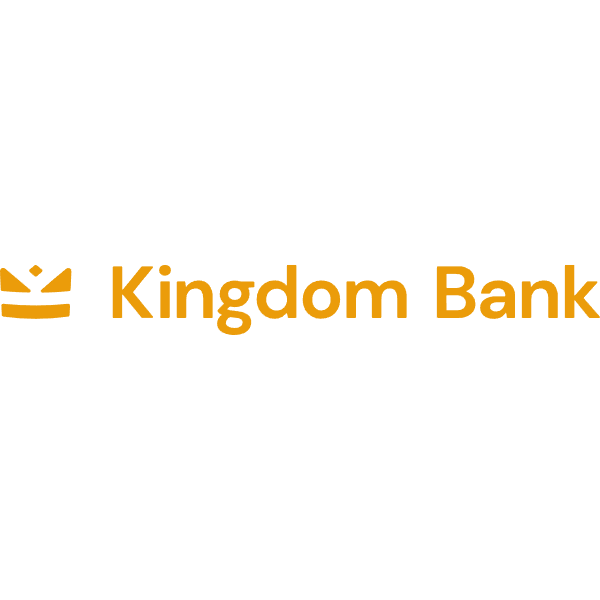Bank of New Zealand (BNZ) is one of the pillars of New Zealand's financial markets, known for its comprehensive financial services, advanced digital technology and strong commitment to sustainability. As one of New Zealand's four largest banks, BNZ has supported more than 1 million personal, corporate and institutional customers through its extensive service network and innovative products since its inception in 1861. The following is a comprehensive analysis of BNZ's underlying information, financial health, products and services, fee structure, digital experience, customer service quality, security measures, unique services and market position.
Basic Bank Information
The Bank of New Zealand is a commercial bank, the full name of Bank of New Zealand, established in October 1861 as a private company through the Banking of New Zealand Act 1861, headquartered in ANZ Centre, 23-29 Albert Street, Auckland, New Zealand. Wholly owned by National Australia Bank (NAB), BNZ has been its subsidiary since 1992 but retains a local New Zealand board for governance. BNZ is a publicly traded company listed on the Australian Securities Exchange (ASX) through NAB under the ticker code NAB, with major shareholders comprising institutional investors (e.g. superannuation funds, insurance companies) and retail investors. As of 2024, BNZ employs more than 5,000 people and has a market capitalisation of approximately NZ$36.8 billion.
BNZ's services are predominantly nationwide in New Zealand, with personal, commercial and institutional clients. In New Zealand, BNZ has a loan market share of about 24% and a deposit market share of 27%. In addition, banks support cross-border operations through representative offices in Asia, Europe, and North America. As of 2024, BNZ has around 180 branches (including retail stores and partner centers) and offers more than 7,000 ATMs through the Global ATM Alliance for easy access to and from customers. BNZ also has operations in seven South Pacific countries, including Fiji.
BNZ is regulated by the Reserve Bank of New Zealand (RBNZ) and the New Zealand Financial Markets Authority (FMA) and is designated as a Systemically Important Financial Institution (SIFI) and is subject to stricter regulatory requirements. Banks participate in the New Zealand Deposit Protection Scheme, which covers a maximum of €100,000 (approximately NZ$160,000) per person per bank. In terms of compliance records, in 2022, RBNZ issued a formal warning to BNZ due to anti-money laundering (AML) issues, and banks subsequently strengthened AML and customer due diligence (KYC) measures. In 2025, BNZ partnered with INTERPOL to further enhance its anti-money laundering and anti-financial crime capabilities, with no new significant compliance issues reported.
Financial health
BNZ's financial health is a key reflection of its position as a leading bank in New Zealand. The following are the key financial indicators as of March 31, 2025:
Capital adequacy ratio: Core Tier 1 capital adequacy ratio (CET1) of 13.8%, Tier 1 capital ratio of 14.8% and total capital adequacy ratio of 16.7%, all higher than the RBNZ requirements of 4.5%, 6% and 8%, Shows a strong capital base.
Non-performing loan ratio: Isolated impaired assets amounted to NZ$288 million, total loans and customer advances amounted to NZ$109,118 million, representing a calculated NPL ratio of approximately 0.26%, reflecting good asset quality.
Liquidity Coverage Ratio: Not directly disclosed, but the relevant liquidity ratios (e.g. 6.6% for a week, 6.9% for January, 88.5% for a one-year core funding) indicate that the BS13/BS13A regulatory requirements of RBNZ are met and liquidity is sufficient.
In March 2025, BNZ had total assets of approximately NZ$109,118 million and a liquid portfolio of NZ$17,674 million, comprising high-quality liquid assets such as cash, government bonds and corporate bonds. Banks have shown confidence in their financial strength by returning capital through dividend and share buyback programs. In 2024, NAB (BNZ's parent company) reported cash gains of $3.55 billion, with BNZ contributing significantly as its core subsidiary.
Quick Judgment: BNZ is in a strong financial position, with capital adequacy ratios and asset quality above regulatory requirements, and abundant liquidity. However, anti-money laundering issues in 2022 may have an impact on investor confidence.
Deposit & Loan Products
BNZ offers a wide range of deposit and loan products to meet the financial needs of individual and corporate customers.
Deposits:
demand deposits: such as YouMoney accounts, suitable for daily transactions, with a low interest rate (about 0.01%).
Fixed Deposits: Fixed interest rates are available with maturities ranging from 1 month to 5 years, with deposit amounts ranging from NZ$5,000 to NZ$2 million, with a maximum interest rate of approximately 4.10% per annum. Customers can choose to pay interest monthly or at maturity, with 31 days' notice required for early withdrawal, otherwise interest rate adjustments may be faced.
High-yield savings accounts, such as Rapid Save accounts, offer a base interest rate of 0.10% plus a bonus interest rate (subject to monthly deposit and other conditions), up to a maximum of 4.65%.
Loans:
Mortgages: Fixed and variable rate mortgages are available, with a minimum variable rate of 5.39% (in May 2025, the loan-to-value ratio is ≤70% to LVR). Support flexible repayment options such as early repayment or redrawdown.
Car loans: Available through partners, interest rates start at 7.99% and can be borrowed up to NZ$100,000, with discounts on electric vehicle loans.
Personal Line of Credit: For example, BNZ Personal Loan, with interest rates starting from 7.99%, is suitable for consumer needs and supports early repayment.
Green loans: Support energy efficiency and renewable energy projects, such as green home loans, with interest rates in consultation with banks.
BNZ's fee structure includes the following common fees:
Account Management Fee: No monthly fee for YouMoney accounts, subject to conditions (e.g. students or customers under 25 years of age). Other accounts may be charged NZ$5/month.
Transfer fees: Domestic transfers are usually free of charge, while international transfers cost NZ$20 (sent in New Zealand dollars via online banking).
Overdraft Fee: Overdraft accounts are charged a daily fee and interest, the exact amount of which is subject to the terms and conditions.
ATM Interbank Withdrawal Fee: NZ$2.50 per ATM using a non-BNZ or non-Global ATM Alliance ATM, and a 2.25% foreign exchange transaction fee for overseas withdrawals.
Hidden Fee Alert: There may be a minimum balance requirement (below which may be charged NZ$5/month) or an account inactivity fee, customers should read the account terms
carefullyBNZ's digital services are based on the BNZ Mobile app and support iOS and Android platforms, apps Store rating 4.7 stars (based on 1,200 reviews) and Google Play rating 4.2 stars (based on 1,300 reviews). The core functions of the app include:
account management: view balances, transaction history, and manage cards (activation, locking, loss reporting).
Real-time transfers: Support domestic and international transfers, integrated PayID and BSB account transfers.
Bill management: Pay bills and set up recurring payments.
Investment Tools: Manage investment accounts and view market data.
Other features: Support Apple Pay, Google Pay, MobilePay, locate ATMs and branches.
In terms of technological innovation, the bank has adopted AI-powered virtual assistants to provide quick queries and personalized budget recommendations, and has supported open banking APIs to allow third-party service integration. BNZ Mobile NetGuard and biometric login (face recognition and fingerprint) enhance security.
Quality of customer service
BNZ provides customer service through multiple channels, ensuring that customers receive support at all times:
telephone support: customers can call 0800 275 269 (New Zealand) or +64 4 931 8209 (International), 24/7 response to emergencies (e.g. card loss).
Live chat: Live support via BNZ Mobile and online banking.
Social Media Responsiveness: Respond quickly to customer queries through the X platform.
Branch services: Approximately 180 branches provide face-to-face support.
For complaint handling, BNZ has a Complaints Officer who can be submitted via an online form or by contacting Financial Services Complaints Limited (FSCL) if they are not satisfied. In 2024, Trustpilot scores show mixed customer satisfaction, with some customers praising quick responses, but others complaining about long wait times on phone calls or poor service.
In terms of multilingual support, the service is mainly provided in English, but may support Māori and other languages, making it suitable for cross-border customers.
Safety and security measures
BNZ takes a number of measures to protect client funds and data:
security of funds: participation in a financial claims scheme up to €100,000. Prevent fraud with real-time transaction monitoring, BNZ Mobile NetGuard, and Visa Secure.
Data security: Complying with the Privacy Act 2020 with data encryption and access controls, and may be ISO 27001 certified (not explicitly disclosed). No major data breaches were reported.
Anti-fraud technology: including multi-layered access control, intrusion detection, and security operations center monitoring.
Featured Services & Differentiation
BNZ meets the needs of the market segment through the following services:
student accounts: BNZ YouMoney accounts provide students with no monthly fee accounts, Free Visa cards and discounts.
Exclusive wealth management for the elderly: provide retirement planning resources, and consult banks for specific products.
Green financial products: Supporting green loans and ESG investments, such as green home loans, with more than NZ$7 billion in environmental financing available in 2024.
High Net Worth Services: BNZ Private Bank offers customised wealth management with a threshold of around NZ$1 million.
Market Position & Accolades
BNZ is one of the four largest banks in New Zealand, with a market share of approximately 24% (loans) and 27% (deposits) in 2024. Globally, BNZ is ranked 125th in the "Global 2000" and 53rd in terms of assets (2019). The bank has won several awards:
"Best Bank in New Zealand" (Global Finance, 2023).
"Best Digital Bank" (Forrester, 2023-2024).
"Best Responsible Investment Bank" (Euromoney).
"Best Private Bank" (Global Finance, 2025).
















